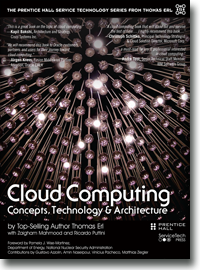Cloud Computing Patterns, Mechanisms > Basics > Data Center Technology > Computing Hardware
Computing Hardware
Much of the heavy processing in data centers is often executed by standardized commodity servers that have substantial computing power and storage capacity. Several computing hardware technologies are integrated into these modular servers, such as:
- rackmount form factor server design composed of standardized racks with interconnects for power, network, and internal cooling
- support for different hardware processing architectures, such as x86-32bits, x86-64, and RISC
- a power-efficient multi-core CPU architecture that houses hundreds of processing cores in a space as small as a single unit of standardized racks
- redundant and hot-swappable components, such as hard disks, power supplies, network interfaces, and storage controller cards
Computing architectures such as blade server technologies use rack-embedded physical interconnections (blade enclosures), fabrics (switches), and shared power supply units and cooling fans. The interconnections enhance inter-component networking and management while optimizing physical space and power. These systems typically support individual server hot-swapping, scaling, replacement, and maintenance, which benefits the deployment of fault-tolerant systems that are based on computer clusters.
Contemporary computing hardware platforms generally support industry-standard and proprietary operational and management software systems that configure, monitor, and control hardware IT resources from remote management consoles. With a properly established management console, a single operator can oversee hundreds to thousands of physical servers, virtual servers, and other IT resources.
